Shepherd's PurseThursday, 25th July 2002, West Yorkshire |
![]()
![]()
![]()
![]() Rocks |
History |
Workshop |
Links |
Home Page
Rocks |
History |
Workshop |
Links |
Home Page
![]()
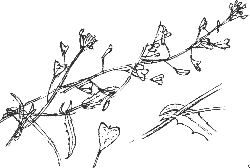 This weed of cultivated ground has sprung up from a flowerpot of pansies. The seeds were probably in the soil that I used to make the compost - along with the seeds of nettles which have also sprouted.
Shepherd's purse has small white cross-shaped flowers but, like many of the crucifers, it's the seedpods, rather than the flowers, which are distinctive. The heart-shaped capsules resemble peasant purses of the medieval period - as seen in some of Brueghel's paintings. The seeds in each purse are said to resemble miniature coins.
This weed of cultivated ground has sprung up from a flowerpot of pansies. The seeds were probably in the soil that I used to make the compost - along with the seeds of nettles which have also sprouted.
Shepherd's purse has small white cross-shaped flowers but, like many of the crucifers, it's the seedpods, rather than the flowers, which are distinctive. The heart-shaped capsules resemble peasant purses of the medieval period - as seen in some of Brueghel's paintings. The seeds in each purse are said to resemble miniature coins.Some of the leaf bases clasp the stem.

Greater Plantain
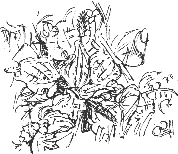 Even on a patch of the back lawn that I can cover with the palm of my hand there are four plant species. Amongst the grass there are leaves of white clover, creeping buttercup and, spreading its spoon-shaped leaves like a starfish, greater plantain.
Even on a patch of the back lawn that I can cover with the palm of my hand there are four plant species. Amongst the grass there are leaves of white clover, creeping buttercup and, spreading its spoon-shaped leaves like a starfish, greater plantain.Greater plantain is resistant to trampling so its rosettes are concentrated here at the top end of the lawn, nearest the house, and on the way down to the garden path by the shed.
By spreading out flat this plantain avoids the blades of the lawn mower and grabs a space for itself on the turf. It's flowerheads too lie low as they develop. The tiny flowers and later the seeds are arranged in a similar pattern to a bunch of bananas along the stem. The banana is a member of the plantain family.
The Natural History of Lofthouse
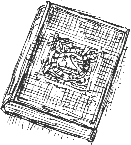
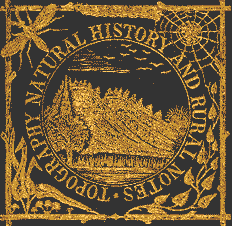 I couldn't resist this book when it appeared in the Rickarro bookshop in Horbury. Richard Knowles, who runs the shop, rang me to say he wasn't trying to sell me the book, no, no, no, but he thought I'd like to see it. He didn't need to sell it to me. With the words 'TOPOGRAPHY, NATURAL HISTORY AND RURAL NOTES' on the cover I can't help thinking that George Roberts, who wrote the book in 1882, must have been some previous incarnation of mine.
I couldn't resist this book when it appeared in the Rickarro bookshop in Horbury. Richard Knowles, who runs the shop, rang me to say he wasn't trying to sell me the book, no, no, no, but he thought I'd like to see it. He didn't need to sell it to me. With the words 'TOPOGRAPHY, NATURAL HISTORY AND RURAL NOTES' on the cover I can't help thinking that George Roberts, who wrote the book in 1882, must have been some previous incarnation of mine.The notes in Topography and Natural History of Lofthouse and its neighbourhood: with the diary of a naturalist and rural notes to give it its full title, meander about from subject to subject even more than this Wild West Yorkshire nature diary does. Honestly. In fact it runs to two volumes. Lofthouse is just six miles from here. Like me Roberts was a member of the Wakefield Naturalists' Society.
Sketchbook Format
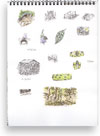 Now that I'm managing to get out a bit more to sketch, even if it is in my own backyard, I've started trying to write my notes alongside the pictures. Up 'til now I've usually sketched the day's observations from memory in the evening, arranging a dozen or so thumbnail sketches on each A4 page of my sketchbook (left).
Now that I'm managing to get out a bit more to sketch, even if it is in my own backyard, I've started trying to write my notes alongside the pictures. Up 'til now I've usually sketched the day's observations from memory in the evening, arranging a dozen or so thumbnail sketches on each A4 page of my sketchbook (left).I then write the text separately, sometimes writing it out in my page-a-day diary but more often typing it straight onto the computer.
When I have the opportunity to draw direct from nature the words that I'd like to put with the picture often occur to me as I'm drawing. So hopefully in the future there will be more pages in my sketchbook with notes made on the spot next to the drawing (right)
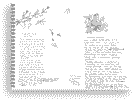
It makes sense. I'm sometimes writing up an observation, about a bird for instance and I can't remember whether it was in a beech or an oak or a lime whatever, so I end up writing 'tree' instead.
![]()
Richard Bell,
wildlife illustrator
E-mail; 'richard@willowisland.co.uk'
![]() Next page |
Previous page |
This day in 2000 |
This month |
Nature Diary |
Home Page
Next page |
Previous page |
This day in 2000 |
This month |
Nature Diary |
Home Page
![]()